-
 Bitcoin
Bitcoin $107,544.4358
-0.02% -
 Ethereum
Ethereum $2,512.4208
3.03% -
 Tether USDt
Tether USDt $1.0002
0.00% -
 XRP
XRP $2.2954
4.88% -
 BNB
BNB $658.9416
1.53% -
 Solana
Solana $156.9061
3.43% -
 USDC
USDC $0.9999
0.01% -
 TRON
TRON $0.2789
1.11% -
 Dogecoin
Dogecoin $0.1666
1.20% -
 Cardano
Cardano $0.5831
4.07% -
 Hyperliquid
Hyperliquid $40.5472
6.61% -
 Bitcoin Cash
Bitcoin Cash $517.2319
5.56% -
 Sui
Sui $2.8191
0.12% -
 Chainlink
Chainlink $13.5273
1.06% -
 UNUS SED LEO
UNUS SED LEO $9.1224
1.19% -
 Avalanche
Avalanche $18.1354
0.37% -
 Stellar
Stellar $0.2401
1.68% -
 Toncoin
Toncoin $2.9528
2.57% -
 Shiba Inu
Shiba Inu $0.0...01152
-0.24% -
 Litecoin
Litecoin $86.8100
-0.26% -
 Hedera
Hedera $0.1520
2.18% -
 Monero
Monero $318.1344
2.43% -
 Polkadot
Polkadot $3.4355
-0.04% -
 Dai
Dai $1.0001
0.02% -
 Bitget Token
Bitget Token $4.5482
-1.07% -
 Ethena USDe
Ethena USDe $1.0003
0.01% -
 Uniswap
Uniswap $7.2490
0.40% -
 Aave
Aave $278.1005
0.65% -
 Pepe
Pepe $0.0...09893
2.45% -
 Pi
Pi $0.5129
-2.55%
What is the automatic position reduction mechanism of LBank contract? How to avoid position reduction?
LBank's automatic position reduction mechanism manages risk by closing positions during extreme market volatility or when account balances fall below required margins.
May 05, 2025 at 08:57 pm
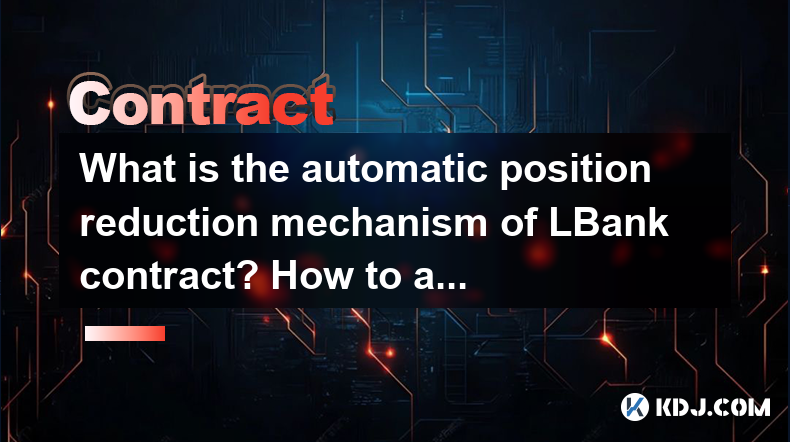
The automatic position reduction mechanism of LBank contract is a feature designed to manage risk and maintain market stability within the trading platform. This mechanism comes into play when the market experiences extreme volatility or when a trader's account balance falls below the required margin level. In such cases, the system automatically closes positions to prevent further losses. This article will delve into the details of this mechanism and provide strategies to avoid position reduction.
Understanding the Automatic Position Reduction Mechanism
The automatic position reduction mechanism on LBank is triggered under specific conditions. When the market undergoes significant fluctuations, the system may initiate this mechanism to protect the platform and its users from excessive risk. Additionally, if a trader's account balance drops below the maintenance margin level, the system will automatically reduce positions to bring the account back into compliance with margin requirements.
The process of position reduction involves the system closing out part or all of a trader's open positions. This action is taken to minimize potential losses and ensure that the account remains within the acceptable risk parameters set by LBank. The exact amount of position reduction depends on the severity of the market movement and the account's margin status.
How Position Reduction Works
When the automatic position reduction mechanism is triggered, the system follows a specific protocol to manage the positions. Here is a detailed breakdown of how the process works:
Monitoring Market Conditions: The system continuously monitors market conditions and account balances. If it detects extreme volatility or a margin shortfall, it prepares to initiate position reduction.
Calculating Required Reduction: Based on the current market conditions and the account's margin status, the system calculates the necessary reduction in positions to bring the account back within acceptable risk levels.
Executing Position Reduction: The system then automatically closes out the calculated amount of positions. This is done in a manner that minimizes the impact on the market and ensures the account's compliance with margin requirements.
Notification: Traders receive notifications about the position reduction, allowing them to take further action if necessary.
Strategies to Avoid Position Reduction
To avoid automatic position reduction, traders can implement several strategies that help maintain their account balance and manage risk effectively. Here are some key strategies:
Maintaining Adequate Margin: Ensure that your account always has sufficient margin to cover potential losses. Regularly monitor your account balance and adjust your positions accordingly.
Using Stop-Loss Orders: Implementing stop-loss orders can help limit losses and prevent your account from falling below the maintenance margin level. Set stop-loss orders at strategic price levels to protect your positions.
Diversifying Your Portfolio: Diversifying your trading portfolio can spread risk across different assets, reducing the likelihood of significant losses in any single position.
Monitoring Market Volatility: Keep an eye on market volatility and adjust your trading strategy accordingly. Reduce your exposure during periods of high volatility to minimize the risk of position reduction.
Practical Steps to Implement These Strategies
Implementing the strategies mentioned above requires careful planning and execution. Here are practical steps to help you avoid position reduction:
Check Your Margin Levels Regularly:
- Log into your LBank account and navigate to the account overview section.
- Review your current margin levels and compare them to the maintenance margin requirements.
- If your margin is close to the required level, consider adding more funds or reducing your positions.
Set Up Stop-Loss Orders:
- Go to the trading interface on LBank and select the contract you are trading.
- Click on the "Order" button and choose "Stop-Loss Order."
- Enter the price at which you want the stop-loss order to trigger and confirm the order.
Diversify Your Trading Portfolio:
- Assess your current portfolio and identify any over-concentration in specific assets.
- Research and select additional contracts or assets to include in your portfolio.
- Allocate your funds across these different assets to spread risk.
Monitor Market Volatility:
- Use LBank's market analysis tools to track volatility indicators such as the Volatility Index (VIX).
- Adjust your trading strategy based on the current level of market volatility.
- Consider reducing your position sizes during periods of high volatility to manage risk.
Understanding the Impact of Position Reduction
Understanding the impact of position reduction on your trading activities is crucial for effective risk management. When positions are automatically reduced, it can lead to several outcomes:
Loss Realization: Position reduction often results in the realization of losses, as the system closes out positions at current market prices, which may be lower than your entry price.
Liquidity Impact: Large-scale position reductions can affect market liquidity, potentially leading to further price movements.
Account Balance: Your account balance will be affected by the position reduction, and you may need to add more funds to continue trading.
Trading Strategy: Position reduction can disrupt your trading strategy, requiring you to reassess your approach and make necessary adjustments.
Case Studies of Position Reduction
To illustrate how the automatic position reduction mechanism works in practice, let's look at a couple of case studies:
Case Study 1: High Market Volatility:
- A trader holds a long position in a cryptocurrency contract on LBank.
- The market experiences a sudden and significant drop in price, triggering the automatic position reduction mechanism.
- The system calculates the necessary reduction and closes out a portion of the trader's position to mitigate risk.
- The trader receives a notification and adjusts their strategy to account for the reduced position.
Case Study 2: Margin Shortfall:
- Another trader has multiple open positions with a total margin requirement that exceeds their account balance.
- The market moves against the trader, causing their account balance to fall below the maintenance margin level.
- The automatic position reduction mechanism is triggered, and the system closes out enough positions to bring the account back into compliance.
- The trader adds more funds to their account to prevent future position reductions.
Frequently Asked Questions
Q: Can I manually override the automatic position reduction mechanism on LBank?
A: No, the automatic position reduction mechanism is a system-controlled feature designed to protect the platform and its users. Traders cannot manually override this mechanism, but they can take proactive steps to manage their risk and avoid triggering it.
Q: How quickly does the automatic position reduction mechanism respond to market changes?
A: The automatic position reduction mechanism on LBank is designed to respond quickly to market changes and account balance fluctuations. The exact response time can vary based on market conditions and system load, but it typically operates within seconds to minimize risk.
Q: Does LBank provide any tools to help traders predict when position reduction might occur?
A: Yes, LBank offers various tools and indicators to help traders monitor market conditions and their account status. These include real-time margin level indicators, volatility indexes, and market analysis tools that can help traders anticipate potential position reductions.
Q: Can position reduction affect my trading fees on LBank?
A: Position reduction itself does not directly affect trading fees. However, the closing of positions may incur standard trading fees based on LBank's fee structure. Traders should be aware of these fees when managing their positions and planning their trading strategies.
Disclaimer:info@kdj.com
The information provided is not trading advice. kdj.com does not assume any responsibility for any investments made based on the information provided in this article. Cryptocurrencies are highly volatile and it is highly recommended that you invest with caution after thorough research!
If you believe that the content used on this website infringes your copyright, please contact us immediately (info@kdj.com) and we will delete it promptly.
- OKX and Binance Delist Trading Pairs: What's Going On?
- 2025-07-01 02:30:12
- Pepeto vs. Shiba Inu: Can the New Meme Coin Dethrone the King?
- 2025-07-01 02:50:11
- Saylor, Bitcoin, Holdings: Strategy's Crypto Empire Grows
- 2025-07-01 02:30:12
- Coinbase, Altcoins, and Listings: What's the Buzz?
- 2025-07-01 00:30:11
- Chainlink's Bullish Signals: Investors Bet on Long-Term Value
- 2025-07-01 00:50:12
- CICADA Finance Soars on BNB Chain: A TGE Deep Dive
- 2025-07-01 01:30:11
Related knowledge
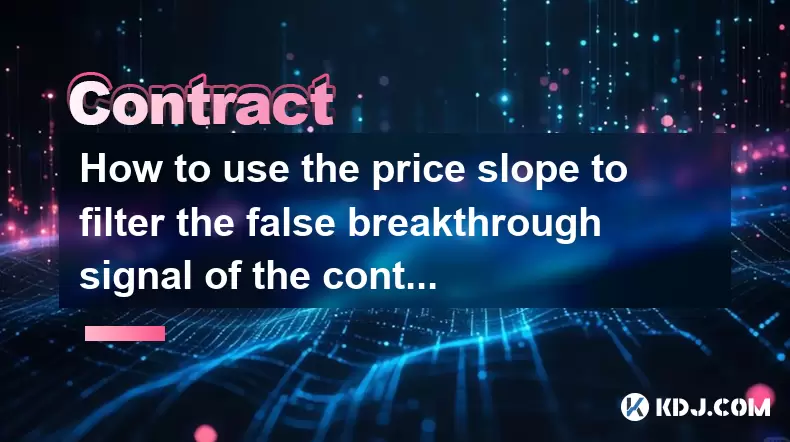
How to use the price slope to filter the false breakthrough signal of the contract?
Jun 20,2025 at 06:56pm
Understanding the Concept of Price Slope in Contract TradingIn contract trading, especially within cryptocurrency derivatives markets, price slope refers to the rate at which the price changes over a specific time period. It helps traders assess the strength and sustainability of a trend. A steep slope may indicate strong momentum, while a shallow slope...
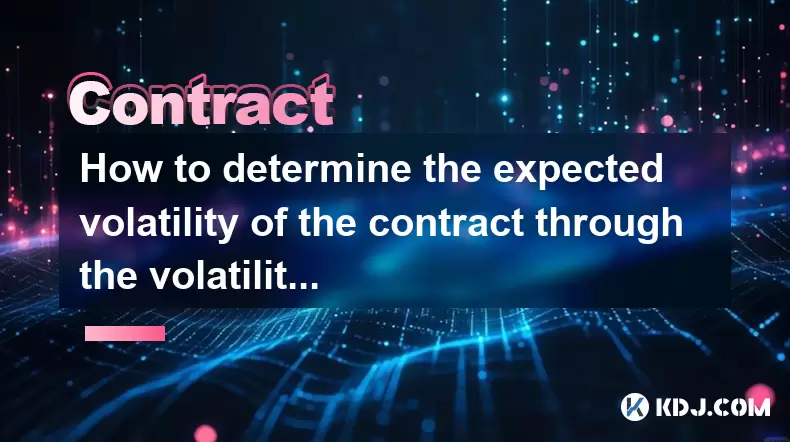
How to determine the expected volatility of the contract through the volatility cone?
Jun 19,2025 at 12:28pm
Understanding the Basics of Volatility in Cryptocurrency ContractsIn the realm of cryptocurrency trading, volatility is a key metric that traders use to assess potential risk and reward. When dealing with futures contracts, understanding how volatile an asset might become over time is crucial for position sizing, risk management, and strategy developmen...
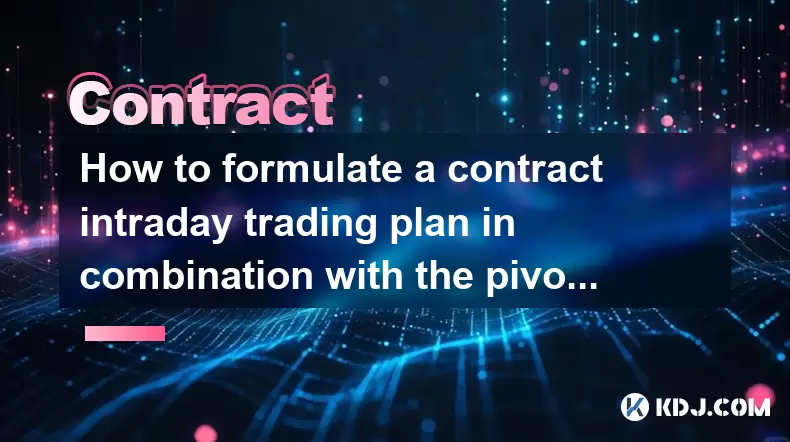
How to formulate a contract intraday trading plan in combination with the pivot point system?
Jun 21,2025 at 03:42pm
Understanding the Basics of Pivot Points in Cryptocurrency TradingPivot points are technical analysis tools used by traders to identify potential support and resistance levels. These levels are calculated using the previous day's high, low, and closing prices. In the context of cryptocurrency trading, where markets operate 24/7, pivot points help trader...
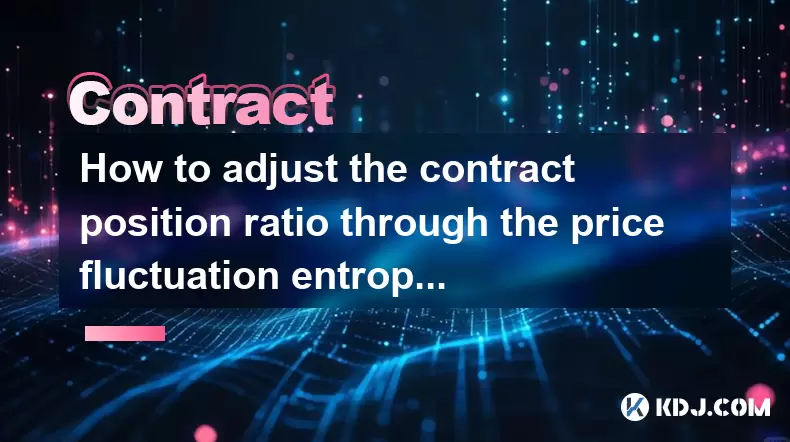
How to adjust the contract position ratio through the price fluctuation entropy?
Jun 22,2025 at 11:42am
Understanding Price Fluctuation Entropy in Cryptocurrency ContractsIn the world of cryptocurrency futures trading, price fluctuation entropy is a relatively new concept used to measure market volatility and uncertainty. It derives from information theory, where entropy refers to the degree of randomness or unpredictability in a system. In crypto contrac...
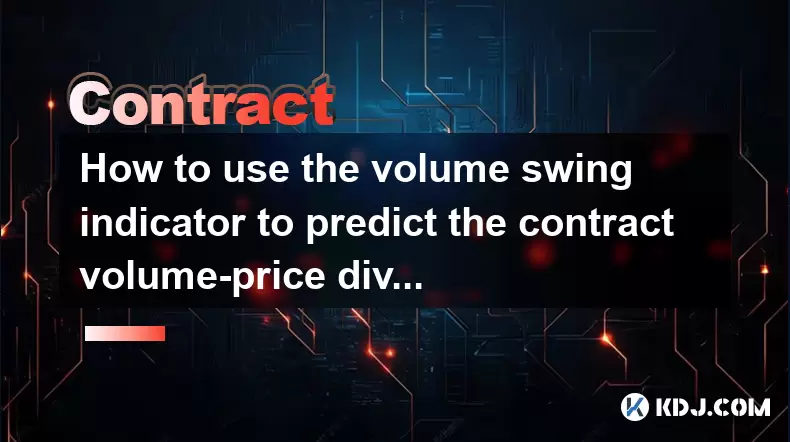
How to use the volume swing indicator to predict the contract volume-price divergence?
Jun 18,2025 at 11:42pm
Understanding the Volume Swing IndicatorThe volume swing indicator is a technical analysis tool used primarily in cryptocurrency trading to evaluate changes in volume over time. Unlike price-based indicators, this metric focuses solely on trading volume, which can provide early signals about potential market reversals or continuations. The key idea behi...

How to use the Gaussian channel to set the contract trend tracking stop loss?
Jun 18,2025 at 09:21pm
Understanding the Gaussian Channel in Cryptocurrency TradingThe Gaussian channel is a technical indicator used primarily in financial markets, including cryptocurrency trading, to identify trends and potential reversal points. It is based on statistical principles derived from the normal distribution, commonly known as the Gaussian distribution or bell ...

How to use the price slope to filter the false breakthrough signal of the contract?
Jun 20,2025 at 06:56pm
Understanding the Concept of Price Slope in Contract TradingIn contract trading, especially within cryptocurrency derivatives markets, price slope refers to the rate at which the price changes over a specific time period. It helps traders assess the strength and sustainability of a trend. A steep slope may indicate strong momentum, while a shallow slope...

How to determine the expected volatility of the contract through the volatility cone?
Jun 19,2025 at 12:28pm
Understanding the Basics of Volatility in Cryptocurrency ContractsIn the realm of cryptocurrency trading, volatility is a key metric that traders use to assess potential risk and reward. When dealing with futures contracts, understanding how volatile an asset might become over time is crucial for position sizing, risk management, and strategy developmen...

How to formulate a contract intraday trading plan in combination with the pivot point system?
Jun 21,2025 at 03:42pm
Understanding the Basics of Pivot Points in Cryptocurrency TradingPivot points are technical analysis tools used by traders to identify potential support and resistance levels. These levels are calculated using the previous day's high, low, and closing prices. In the context of cryptocurrency trading, where markets operate 24/7, pivot points help trader...

How to adjust the contract position ratio through the price fluctuation entropy?
Jun 22,2025 at 11:42am
Understanding Price Fluctuation Entropy in Cryptocurrency ContractsIn the world of cryptocurrency futures trading, price fluctuation entropy is a relatively new concept used to measure market volatility and uncertainty. It derives from information theory, where entropy refers to the degree of randomness or unpredictability in a system. In crypto contrac...

How to use the volume swing indicator to predict the contract volume-price divergence?
Jun 18,2025 at 11:42pm
Understanding the Volume Swing IndicatorThe volume swing indicator is a technical analysis tool used primarily in cryptocurrency trading to evaluate changes in volume over time. Unlike price-based indicators, this metric focuses solely on trading volume, which can provide early signals about potential market reversals or continuations. The key idea behi...

How to use the Gaussian channel to set the contract trend tracking stop loss?
Jun 18,2025 at 09:21pm
Understanding the Gaussian Channel in Cryptocurrency TradingThe Gaussian channel is a technical indicator used primarily in financial markets, including cryptocurrency trading, to identify trends and potential reversal points. It is based on statistical principles derived from the normal distribution, commonly known as the Gaussian distribution or bell ...
See all articles

























































































